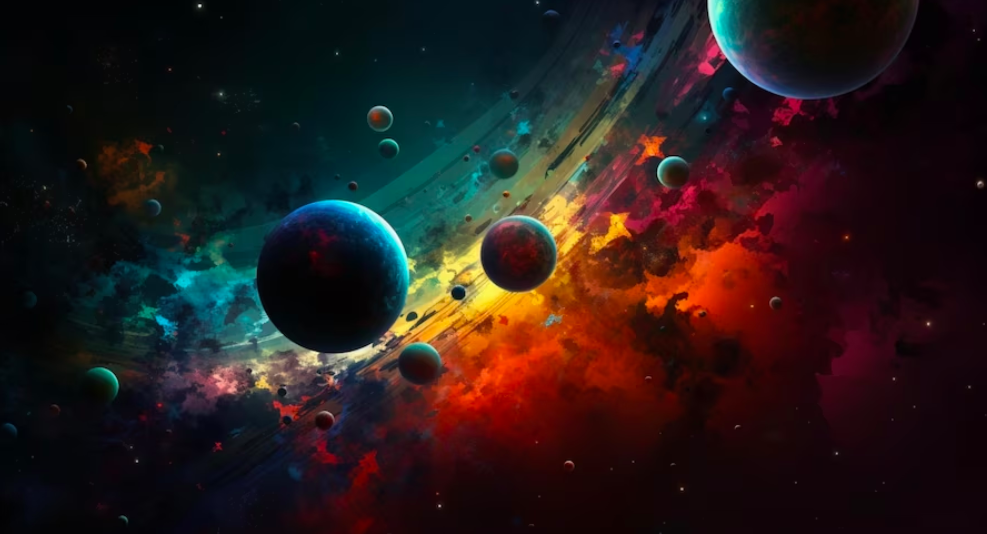Witnessing Cosmic Ballet: Unveiling the Majesty of Galaxy Collisions and Mergers

Introduction
In the vast expanse of the cosmos, galaxies engage in a mesmerizing cosmic ballet - the majestic phenomenon of galaxy collisions and mergers. This awe-inspiring celestial event has captivated astronomers and space enthusiasts alike for generations. In this comprehensive article, we delve deep into the intricacies of galaxy collisions and mergers, unveiling their secrets and shedding light on their profound implications for our understanding of the universe.
Understanding the Cosmic Tango
What Are Galaxy Collisions and Mergers?
Galaxy collisions and mergers are cosmic phenomena in which two or more galaxies interact gravitationally, often resulting in a breathtaking dance of stars, gas, and dust. These interactions can take various forms, from gentle passes to full-blown mergers, and they play a pivotal role in shaping the evolution of galaxies.
The Dynamics of Galactic Encounters
When galaxies approach each other, their gravitational forces come into play. This can lead to a range of dynamic interactions, including tidal forces that stretch and distort the galaxies, inducing the formation of long, luminous tails of stars and gas. These tails are a testament to the immense gravitational forces at play.
Cosmic Collisions: A Stellar Collision Course
As galaxies draw closer, their stars and interstellar matter can collide, setting off a dazzling display of starbursts. These cosmic fireworks result in the birth of countless new stars, adding to the intricate tapestry of the universe.
The Impact on Galactic Evolution
Galactic Metamorphosis
One of the most profound effects of galaxy collisions and mergers is their role in reshaping the galaxies involved. Over millions of years, these celestial tango partners merge their stellar populations, transforming into entirely new entities. This metamorphosis often leads to the formation of elliptical galaxies, which are distinct from the spiral or irregular galaxies we typically observe.
Supermassive Black Holes Unleashed
In the midst of these cosmic collisions, the supermassive black holes lurking at the centers of galaxies also come into play. As galaxies merge, these colossal gravitational giants are drawn closer together, eventually spiraling towards each other in a cataclysmic dance. The result? A titanic release of energy in the form of powerful quasars and gravitational waves that ripple through the fabric of spacetime.
Observing the Spectacle
Advanced Telescopes: Our Cosmic Binoculars
Astronomers rely on cutting-edge telescopes and observatories to witness the spectacle of galaxy collisions and mergers. Instruments like the Hubble Space Telescope provide unprecedented views of these cosmic events, enabling scientists to capture stunning images and gather crucial data.
Gravitational Wave Detectors: Hearing the Universe
In recent years, the advent of gravitational wave detectors like LIGO and Virgo has opened a new dimension in our exploration of cosmic mergers. These detectors, sensitive to the ripples in spacetime caused by massive collisions, allow us to "listen" to the universe and uncover hidden treasures of knowledge.
The Cosmic Significance
Unraveling the Mysteries of Dark Matter and Dark Energy
Galaxy collisions and mergers offer a unique opportunity to study the enigmatic forces of dark matter and dark energy. By analyzing the gravitational effects of these interactions, scientists gain insights into the mysterious components that make up the majority of the universe.
Cosmic Recycling
The aftermath of galaxy collisions and mergers is not just about destruction; it's also about creation. These events play a crucial role in redistributing elements like hydrogen and helium, enriching the universe with the raw materials needed for the formation of new stars, planets, and ultimately, life.
Conclusion
The cosmic ballet of galaxy collisions and mergers is a testament to the grandeur and complexity of our universe. As astronomers continue to unravel the secrets hidden within this celestial tango, we gain a deeper understanding of the forces that have shaped and continue to shape the cosmos. From galactic metamorphosis to the mysteries of dark matter and dark energy, these cosmic encounters offer a window into the very fabric of the universe, reminding us of the boundless wonders that await our exploration.
As we gaze toward the stars, let us remember that the universe is not a static entity but a dynamic, ever-evolving masterpiece, with galaxy collisions and mergers as its captivating choreography.


